
Account-based marketing is the answer many B2B marketing and sales professionals have been seeking. B2C marketers have used targeted marketing and personalization for years in campaigns to drive more impactful results.
Account-based marketing finally allows B2B marketers and sales teams to work together to deliver highly personalised and targeted messaging to drives sales and growth for their companies.
What is Account-Based Marketing? ABM Definition
There are many ways to explain what account based marketing is. Here are 4 popular definitions of ABM:
- Account-based marketing is a strategic approach that focuses on high-value accounts in a market or business.
- Account-based marketing is a B2B strategy that sales and marketing departments use to focus their efforts on specific organizations, or accounts.
- Account-based marketing (ABM) is a B2B marketing strategy for high-value customer accounts. In ABM, you focus on each account as a “market of one,” offering highly personalized 1-to-1 experiences and tailored content.
- Account based marketing creates the opportunity for sales teams and marketing teams to deliver highly personalized, targeted marketing to companies (accounts) that best fit the business and create the most long-term value (sales).
To summarize: account based marketing is personalized strategic marketing focused on high-value prospects or customers. Put simply, account based marketing is highly targeted marketing for B2B.
Customers expect companies to deliver connected, targeted experiences. Companies that do so are rewarded handsomely.
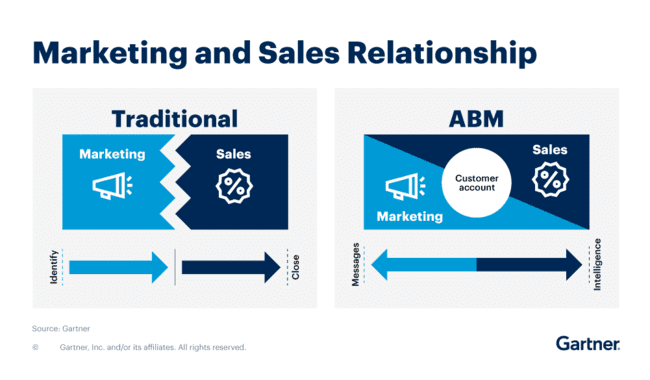
- Consumers expect targeted marketing. Salesforce research indicates 73% of customers expect companies to understand their unique needs and expectations.
- Customers expect consistent interactions across teams. Salesforce’s State of the Connected Customer Report showed that 79% of customers expect consistent interactions across departments.
- Targeted marketing is just good business. McKinsey research found that companies that excel at personalization generate 40% more revenue from those activities than average players.
What Kind of Companies Should Adopt Account Based Marketing?
Companies that should adopt account-based marketing typically are business-to-business enterprise-level companies with larger budgets.
Companies that have the following characteristics will realize the most value from an account based marketing strategy.
Have Long Sales Cycles
Businesses with extended sales cycles, where decisions involve multiple stakeholders and require a more personalized approach, can use account based marketing to nurture relationships over time.
Have Highly Customizable Products or Services
Companies offering highly customizable products or services, where the value proposition varies for each client, can benefit from the tailored messaging and content creation aspects of account based marketing.
Offer Complex Products
Businesses providing complex products that require a deep understanding of the client’s needs and challenges are well-suited for account based marketing. The personalized approach helps communicate the intricacies of these products.
Operate within Niche Markets
Companies in industries with niche markets or specialized products (ex: healthcare, financial services), where a focused and targeted approach is more effective than broad marketing, can find account based marketing advantageous.
Have a Clear Ideal Customer Profile
Companies that have a well-defined Ideal Customer Profile (ICP) can effectively implement ABM. Knowing the characteristics of the best-fit customers helps in identifying and targeting similar accounts with precision.
Have a Strong Alignment Between Sales and Marketing
Successful ABM strategy requires strong alignment between sales and marketing teams. Companies where these departments collaborate to target, engage, and close deals are more likely to see positive results from ABM.
Have a Data-Driven Culture
ABM relies heavily on data to identify accounts, personalize content, and measure success. Companies with a strong focus on data-driven decision-making are better equipped to implement ABM strategy effectively.
Have Limited Marketing Resources
Companies with limited marketing resources benefit from ABM by concentrating on a select group of high-potential accounts. This targeted approach maximizes the impact of ABM strategy.
The 5 Main Benefits of Account Based Marketing
Account based marketing has several advantages in comparison to traditional B2B marketing
- Personalized Approach
- Account based marketing is highly personalized to fit a specific audience, resulting in more effective marketing campaigns vs. traditional B2B marketing.
- Personalization creates a stronger connection with the target audience, increasing engagement and increasing the likelihood of successful conversions.
- Cost Effective
- Account based marketing uses resources more efficiently, reducing wasted efforts on accounts that may not be the best fit.
- Marketing and sales teams can allocate resources more efficiently, avoiding wasteful spending on broad-reaching campaigns that may not yield significant returns. This results in a higher return on investment.
- Higher Value Customers
- Account based marketing focuses targeting high-value accounts that align closely with a company’s products or services.
- By focusing on accounts with the potential for larger deal sizes, higher retention rates, and increased lifetime value, businesses can attract and acquire customers that contribute to significant growth.
- Connected Experience
- Sales and marketing are aligned around a single audience and campaign, resulting in a connected experience for prospects. Prospects reward businesses that deliver a connected experience through increased sales.
- Retention & Long-Term Value Focus
- Account based marketing is focused on long-term value by nurturing relationships with high-value accounts.
- Account based marketing aims to build sustained and meaningful connections, resulting in increased customer loyalty, repeat business, and advocacy.
How to Adopt Account Based Marketing
To successfully adopt account based marketing, companies should follow this 5 step process:
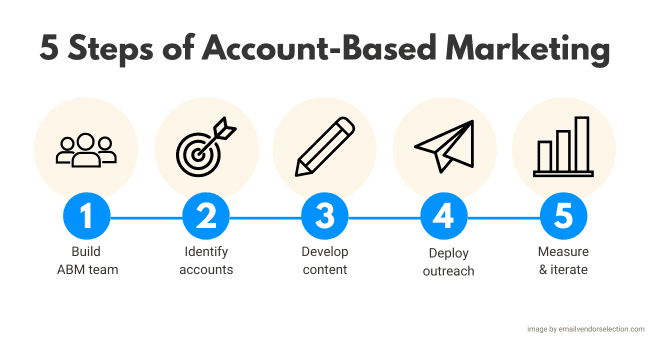
1. Build an account based marketing team
Building a successful account based marketing team requires assembling a broad group of sales and marketing professionals into a team. Account based marketing team members need to align around specific goals & objectives.
Within the team, companies should define account based marketing team roles & give team members access to tools, processes, and technologies to support collaboration.
Account Based Marketing Teams will consist of roles across sales and marketing to engage with target accounts across the B2B decision-maker buying journey. These roles should be clearly defined and include:
- Account based marketing lead: Responsible for overall account based marketing strategy and coordination.
- Data Analysts: Analyze sales and marketing data from account based marketing campaigns.
- Content Marketers: Create content for target accounts.
- Sales Development Representatives (SDRs): Sales reps and the sales team will engage with accounts to qualify the account and set a sales appointment with an account executive.
- Account Executives: Collaborate with SDRs, the sales team, and marketing team to engage and convert accounts into clients or grow existing accounts.
- Marketing Automation Specialists: Manage tools for automation and tracking.
Account Based Marketing Team Collaboration:
- Sales teams and marketing teams may not always naturally collaborate on projects together.
- Successful teams will foster regular communication, shared alignment on goals and objectives, and joint planning sessions across sales and marketing to make sure ABM programs succeed.
Effective teams will make sure all team members use shared account based marketing tools, including:
- Marketing automation tools
- CRM platforms
- Analytics tools
2. Identify target accounts
Identifying target accounts is a collaborative process between sales and marketing.
Both marketing and sales teams must work together to identify accounts that have the best potential alignment with the business’ products and services and the best potential for generating revenue.
To identify accounts, start by creating your ideal customer profile (ICP). To create a reasonable list of target accounts, start with the following factors:
- Industry: Include industries that align with your business goals and where your products provide the most value.
- Company Size: Determine the ideal size of companies that are likely to benefit from your offerings (small business to large enterprise corporations)
- Location: Identify areas where strong demand exists for your products or services.
- Revenue: Identify the revenue range of companies that are considered ideal customers to target companies with the financial capacity to afford your products.
- Company Challenges: Understand the specific challenges and pain points faced by your target account to inform how to market your products.
- Long-Term Relationship Potential: Identify accounts that are likely to establish long-term relationships with your company and create long-term value.
Defining your ICP is not a one-time activity. It’s an ongoing process that should use current customer feedback and reflect market dynamics. Customer and market needs evolve, which will influence your ICP.
Once you’ve identified your ICP, decide which accounts have the best probability of being high value to your company.
Consider the following to identify high value accounts:
- Alternative Companies: determine if companies who sell similar products or services as your company are likely to sell to the same account.
- Budget: determine how much the account could contribute to your revenue.
- Growth Opportunities: determine if there is a high probability of growing the account with your products based on the account’s focus areas.
3. Develop personalized content
To develop personalized account based marketing content, companies should create marketing and sales messages to meet the specific needs & challenges of individual accounts.
Content should be designed to address the distinct requirements of high-value accounts, ultimately increasing the effectiveness of account based marketing tactics & campaigns in driving conversions and long-term customer value.
To create content which resonates, follow these principles:
- Understand Your Target Accounts: Foundational target account knowledge forms the basis for creating content that resonates.
- Create Detailed Buyer Personas: Develop detailed buyer personas within your ideal customer profile. These personas represent the key decision-makers and influencers within the accounts. Consider their roles, responsibilities, preferences, and communication styles to inform your content strategy.
- Use Account Insights: Use data and insights gathered from interactions with accounts. Analyze engagement data, website visits, and any other relevant information to understand what content has captured their interest.
4. Deploy Omnichannel Outreach
B2B decision makers can use up to 10 different marketing channels on their path to make a purchasing decision, according to Mckinsey, including digital marketing and traditional marketing channels:
- In-person
- Phone
- Website
- Procurement Departments
- Mobile Applications
- Procurement Online Portals
- Video Conference
- Web chat
- Google Search
Companies that engage with B2B decision makers across more channels are rewarded. According to the same McKinsey study, B2B companies that engage prospects through more channels grow at a faster rate.
Account based marketing engages prospects in various digital marketing channels to make sure that the accounts are reached in preferred marketing channels, increasing the chances of engagement.
To adopt a successful omnichannel approach, companies must have a strong alignment between sales and marketing to coordinate outreach efforts.
Outreach efforts should be cataloged and shared with account based marketing team members in real time to make sure all members are aligned on communication efforts.
Make sure all team members performing outreach are aware of the following information
- Stage of Buying Process: content needs to align with different stages of the buying journey – from awareness and consideration to decision-making. Tailor content to address the specific needs at each stage.
- Account Goals and Pain Points: In messaging, address the specific pain points and goals of each account to convey a deep understanding of unique challenges.
- Content Type Preferences: Some may prefer whitepapers, while others may engage more with webinars or interactive content. Adjust content format to individual preferences.
5. Measure Performance and Iterate
Measuring the success of your account based marketing tactics is crucial for optimizing strategies and demonstrating the impact on business outcomes. Metrics should be reviewed regularly across all ABM team members.
Teams should evaluate performance across 3 areas: account based marketing overall performance, marketing metrics, and sales metrics.
Account Based Marketing Metrics
- Revenue Impact: The success of ABM is reflected in revenue. Measure the revenue generated from accounts engaged through ABM activities. Compare this with the overall revenue to assess the percentage contribution.
- Customer Acquisition Cost (CAC): Evaluate the cost-effectiveness of acquiring customers through ABM. Calculate ABM CAC and compare it to other marketing channels.
- Account Based Marketing Program ROI: Compare the revenue generated to the costs incurred in running account based marketing campaigns. Consider both direct and indirect costs.
- Customer Retention and Expansion: Account based marketing efforts can contribute to the loyalty of existing customers and lead to upsell opportunities.
- Customer Lifetime Value (CLV): ABM should contribute to attracting and retaining high-value customers & positively influences CLV.
Companies will need to track marketing & sales metrics in account based marketing campaigns.
Marketing Metrics
- Account Engagement Metrics: Monitor engagement metrics specific to accounts, such as website visits, content downloads, webinar attendance, and social media interactions.
- Conversion Rates: Track conversion rates at different account based marketing funnel stages. Measure accounts that progress from awareness to consideration to conversion.
Sales Metrics
- Pipeline Contribution: Track the number of leads generated, opportunities created, and the overall pipeline value attributed to account based marketing tactics.
- Deal Velocity: If account based marketing is accelerating the sales process, it indicates success. Compare the deal velocity of ABM-engaged accounts vs. non-ABM accounts.
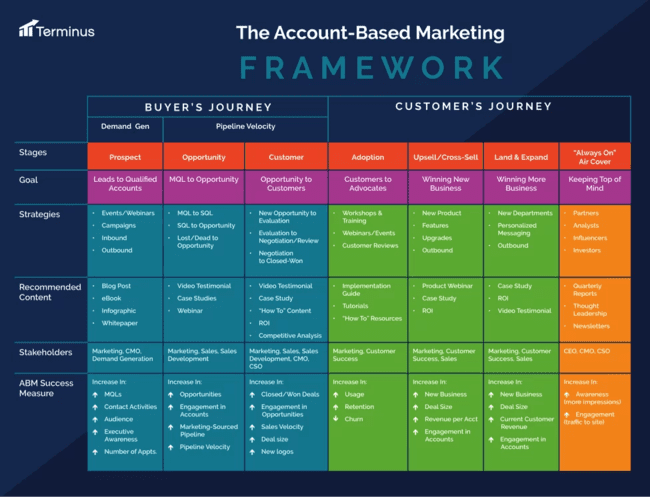
This Account-Based Marketing framework helps ABM teams align the buyer (prospect) journey with the customer journey, outlining goals, strategies, content, stakeholders, and success metrics for each step of the journey. This high-level approach can help give ABM teams a good starting point for unlocking value with account based marketing. Making sure they are focused on the right strategies and tactics to move prospects along the journeys into buyers and lifetime accounts.

Similar to the framework described above on how to adopt account based marketing, the TOPO account-based marketing framework includes 8 focus areas. Define your target accounts, develop your strategy, build your list of target accounts, align your teams to focus on target accounts, create offers and content that will engage target accounts, deploy content to marketing channels, measure results, and use technology to deliver account value.
5 Account Based Marketing Platforms
Software companies have made platforms that are specifalised in account based marketing. When B2B marketing started focussing on the delivery of personalized and targeted engagement with theri key accounts.
There are dozens of different software applications that can identifying key accounts, do lead scoring, personalization, campaign management, analytics, and reporting. Here are 5 software options to consider:
1. Salesforce
Salesforce Marketing Cloud Account Engagement (formerly known as Pardot) is Salesforce’s B2B marketing automation tool. Marketing Cloud Account Engagement is deeply integrated with Salesforce CRM products, making it an attractive offering to break down data silos between marketing teams and sales teams.
It has a minimal learning curve. Certification programs exist through the Salesforce Trailhead community for those ready to become experts.
The tool can connect with digital ad platforms to launch campaigns across the customer journey.

Salesforce doesn’t offer a free trial. Pricing starts at $1,250 per month and scales quickly based on the number of contacts in your database and the features you’re looking to take advantage of.
Pros
- Straightforward to get started on the platform
- Integrations with other Salesforce products are relatively easy to configure
- Can extend Marketing Cloud Account Engagement capabilities with the Salesforce AppExchange and Marketing App Extensions
Cons
- Out of the box reporting is limited in scope
- Not specifically designed to be an ABM tool – rather it was built as a B2B marketing automation engine that has ABM tools.
2. Hubspot ABM Software
Hubspot ABM software is an all-in-one marketing automation platform.
The software can identify target accounts, help marketers develop and deploy personalised content, and measure campaign results.
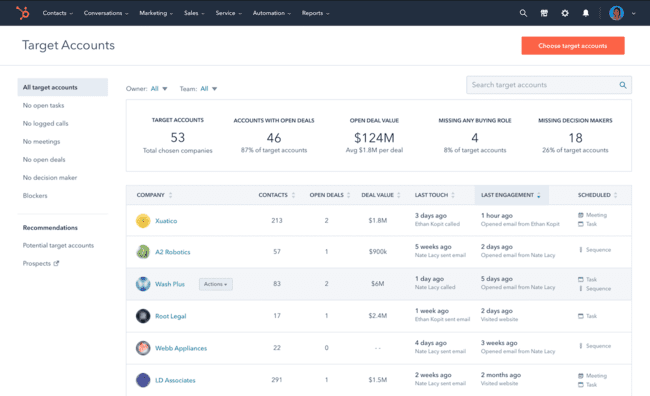
Hubspot ABM integrates with collaboration tools such as Slack and social channels such as LinkedIn to help marketing and sales team collaborate and deploy content.
Hubspot ABM also integrates with Hubspot’s CRM suite, which helps automate tasks including sending emails and assigning tasks to team members.

There is no free trial for the software and starts at $800 per month. Pricing is based on the number of contacts and the customization features you are interested in exploring. Find out all the details in our full Hubspot pricing guide.
Pros
- User-friendly UI that’s approachable to learn vs. other tools
- Integrations with other platforms are straightforward
Cons
- Features such as customer journey analytics, predictive lead scoring, and multi-touch attribution only limited Enterprise plans (significantly more expensive)
- Landing page designs and editors are not attractive and not easy to use.
Read our full Hubspot review to learn more about features, pros, and cons.
3. Adobe Marketo Engage
Adobe Marketo Engage is the self-reported largest marketing automation platform. The software allows you to manage ABM efforts within a single platform.
There is no free trial of the software and the purchase requires a custom quote, which is based on the company’s database size and the number of users who will use Marketo Engage.
The software has great tools for creating and managing your ABM campaigns. Marketo Engage is unique in the marketplace due to its integration with other Adobe products, including web analytics, customer data, and project management tools.
Pros
- One-size-fits all approach for most industries
- Robust tools for creating and managing campaigns
- Ability to combine with other Adobe products (Adobe Analytics, Adobe Workfront, CDP) creates unique value proposition.
Cons
- Steep learning curve to master the platform
- CRM integrations have reported issues to set up and maintain
4. Demandbase
Demandbase is an all-in-one account-based marketing software tool with its features built from the ground up with B2B in mind.
Unlike many other ABM tools, Demandbase has a custom DSP built for B2B marketers. As such, Demandbase has great tools to identify accounts, create account insights, and quickly create target account lists.
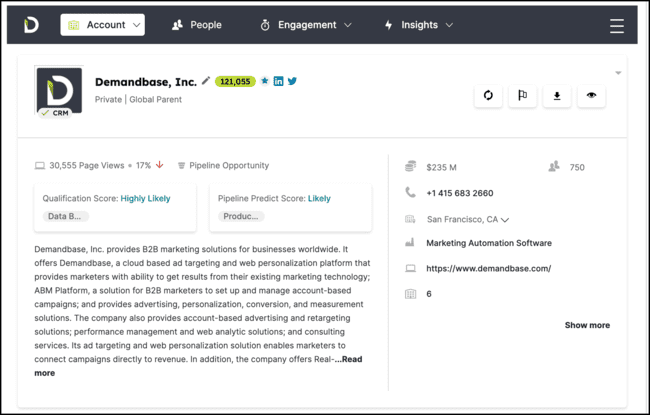
Demandbase gives users access to precise account-level data from a variety of input data sources (CRM, intent data, firmographics, etc.) to help deliver integrated sales and marketing campaigns.
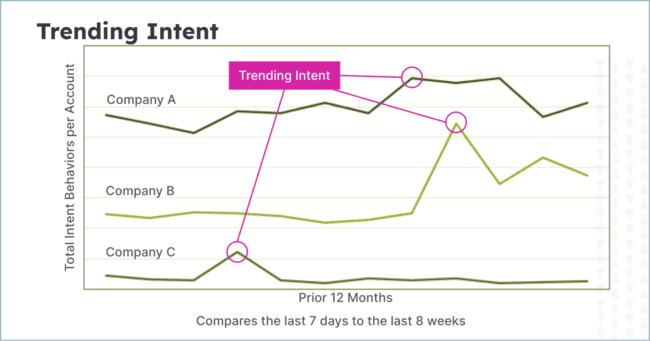
Like other ABM software, Demandbase does not offer a free trial, so companies will need to secure a custom quote to get started.
Pros
- Leader in account identification and account insights
- Great personalization features for campaign execution
- Demandbase B2B DSP self-optimizes campaigns through AI to maximize performance
Cons
- Could use improvement in contact selection tools
- Challenging to manage communications across multiple journey stages
5. Terminus
Terminus delivers great value for B2B marketers, allowing account-based marketing teams to confidently break down silos with sales teams and work together in a single source of truth.
It really stands out in its personalization capabilities – claiming on its website that ABM campaigns can be launched across the most engagement channels of any ABM platform, including conversational marketing, web personalization, LinkedIn, connected TV, and audio ads. Robus campaign reporting helps make Terminus a great option for marketers.
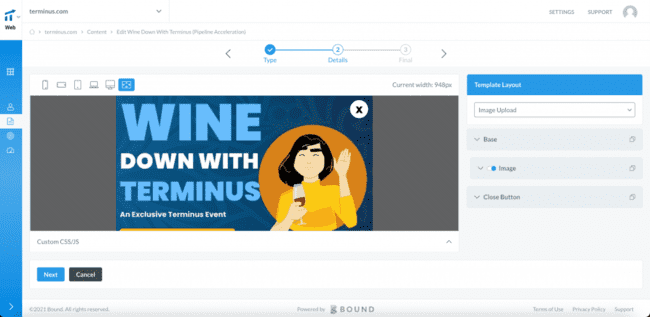
Terminus also has step-by-step ABM playbooks across the entire customer lifecycle. This is great for those companies just getting started with account-based marketing.
Similar to other ABM software, Terminus doesn’t offer a free trial and requires custom pricing.
Pros
- Great personalization features for campaign execution – particularly email
- Integrations with other platforms are straightforward
Cons
- Lead scoring could use improvement
- Small UX woes across the platform
- Orchestration across channels can be challenging
Conclusion: What is Account Based Marketing
Account based marketing helps B2B marketing and sales teams deliver personalized, targeted marketing to high value accounts. Companies that use account based marketing can expect a cost-effective way to acquire higher value, long-term customers and prospects.
To get started with account based marketing, build your account based marketing team, identify target accounts, develop personalized content, deploy omnichannel outreach, and measure the success of your strategies. Companies can choose from a wide variety of account based marketing software. Hubspot ABM Software, Adobe Marketo Engage, Demandbase, Terminus, and Salesforce are 5 software tools to consider.
Frequently asked questions – account based marketing
Sources
1. Salesforce “Report: Nearly 90% Of Buyers Say Experience a Company …” 2022
2. Salesforce “Report: Nearly 90% Of Buyers Say Experience a Company …” 2022
3. McKinsey “The value of getting personalization right—or wrong—is multiplying” 2021
